Key takeaways:
- Wildlife conservation is vital for ecosystem balance, impacting air, water, and land quality.
- Mangroves serve as natural barriers against environmental threats while supporting biodiversity and filtering pollutants.
- Planting mangroves benefits both the environment and local communities by enhancing livelihoods and protecting coastlines.
- Engaging local communities in conservation efforts fosters a sense of ownership and encourages sustainable practices.
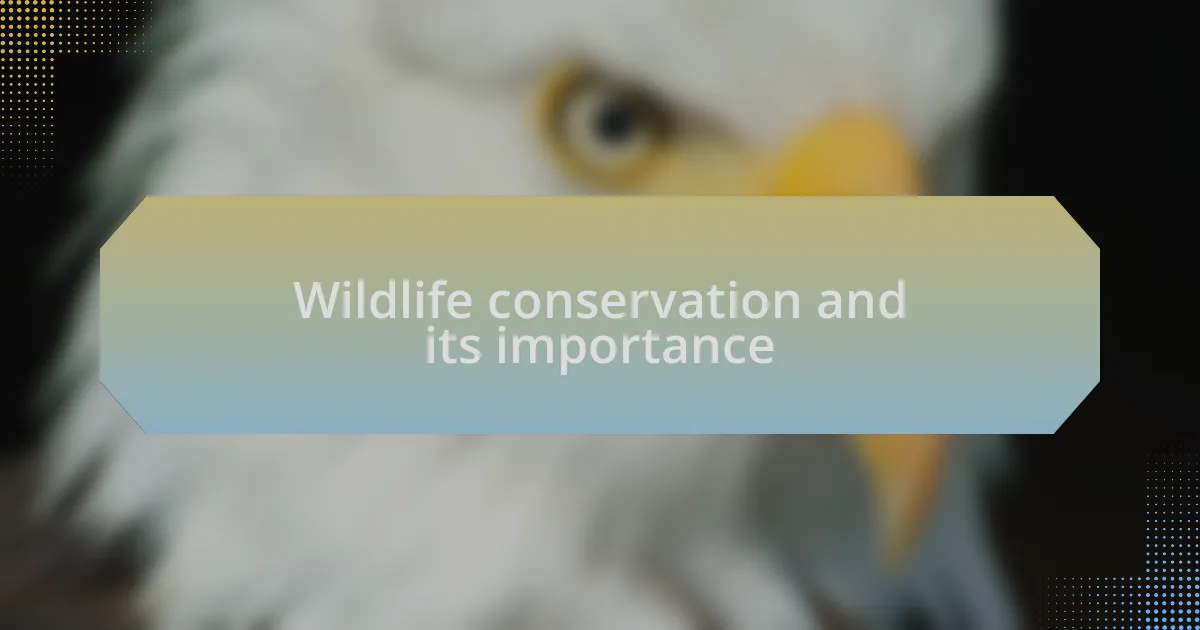
Wildlife conservation and its importance
Wildlife conservation is crucial for maintaining the delicate balance of our ecosystems. I remember the first time I spotted a rare bird during my fieldwork; its vibrant colors and unique calls captivated me. This experience made me realize that every species has a role to play, and when we lose one, the whole system can falter.
The impact of conservation extends beyond animals; it influences our air, water, and land too. I once visited a stunning mangrove forest and felt the serenity wash over me. It struck me how these ecosystems not only provide habitat for diverse wildlife but also protect coastal areas from erosion and storm surges. Could we truly afford to let such natural shields disappear?
Imagine a world where biodiversity thrives, where each organism contributes to our collective well-being. The thought brings a sense of hope, prompting me to take action. As stewards of the earth, we have a responsibility to ensure future generations can experience the same wonders of nature that inspire us today. Conservation isn’t just about saving wildlife; it’s about preserving the beauty and resources that sustain us all.
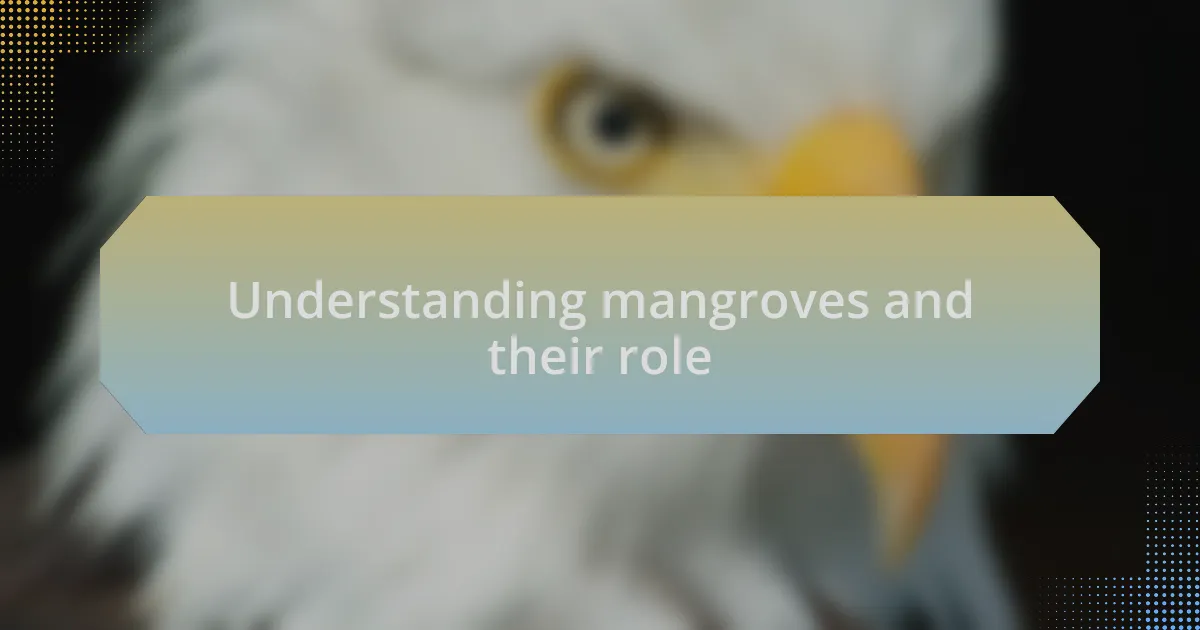
Understanding mangroves and their role
Mangroves are unique coastal ecosystems, found at the intersection of land and sea. I vividly recall the first time I walked through a mangrove forest; the aroma of saltwater mixed with the earthy scent of the mud was almost intoxicating. These trees thrive in brackish water, showcasing their remarkable adaptability, and they provide a crucial habitat for countless species. Have you ever thought about how many creatures depend on these thriving roots for survival?
The role of mangroves extends far beyond their impressive biodiversity. They act as natural barriers against storm surges and rising sea levels. I’ve seen firsthand how after a severe storm, the mangroves stood resilient, protecting shoreline communities from devastation. It’s astonishing to realize that their complex root systems not only stabilize the coastline but also help filter pollutants from the water, ensuring cleaner habitats for wildlife.
Additionally, mangroves play a vital part in carbon sequestration, capturing carbon dioxide and reducing its presence in the atmosphere. It’s fascinating to learn that these ecosystems are among the most effective carbon sinks on the planet. When I reflect on this, I find myself wondering—what steps can we collectively take to protect these invaluable ecosystems? Through understanding their importance, we can inspire action and collaboration to ensure their survival for generations to come.

Benefits of planting mangroves
Planting mangroves offers myriad benefits, not just for the environment but for communities as well. I remember visiting a coastal village where the local fishermen spoke passionately about how the newly planted mangroves had improved their catches. It’s incredible to realize that these trees create habitats for fish and shrimp, which in turn supports local livelihoods. Have you ever considered how interconnected our ecosystems really are?
Moreover, mangroves act as a natural shield against erosion. I witnessed this during a coastal clean-up; we were able to see the difference in soil stability in areas where mangroves had been reintroduced. Their dense root systems anchor the soil in place, preventing loss and maintaining the integrity of our coastlines. This kind of protection is crucial as we face the growing threats of climate change.
Finally, the mental and emotional benefits of planting mangroves should not be overlooked. There’s something profoundly gratifying about participating in restoration projects. When I helped plant mangrove saplings, I felt a sense of hope for the future—knowing that my small effort contributed to combating climate change. Have you ever asked yourself how your actions contribute to the greater good? Each sapling we plant is a step toward healing our planet.
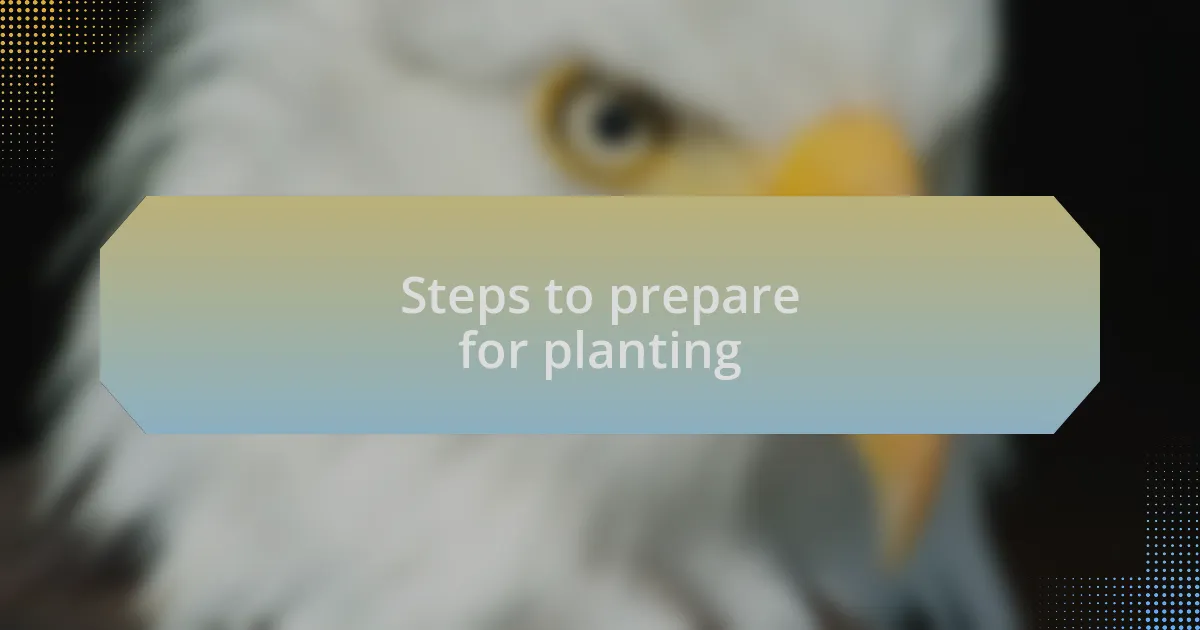
Steps to prepare for planting
Preparing for planting mangroves requires thoughtful planning and site selection. From my experience, it’s essential to choose a location where the soil salinity and flood levels are suitable for mangrove growth. I often reflect on the challenges I faced with poor site selection during my early attempts—it’s a learning curve that can make a significant difference in the success of the project.
Next, gather the right materials and resources ahead of time. I remember my first planting day, I was scrambling to find tools and supplies, which delayed the process. Having shovels, protective gloves, and quality saplings ready at hand not only streamlines the planting process but also sets the tone for a successful day of conservation work. Have you ever been in a situation where preparedness turned a daunting task into a fulfilling experience?
Lastly, engaging the local community is vital. Before my last planting event, I reached out to residents and explained the importance of mangroves to both the environment and their livelihoods. Their eagerness to participate made the experience more enriching. When people feel connected to a project, their sense of ownership grows, and that’s something I’ve learned can lead to lasting impact. How might involving others enhance your efforts in conservation?
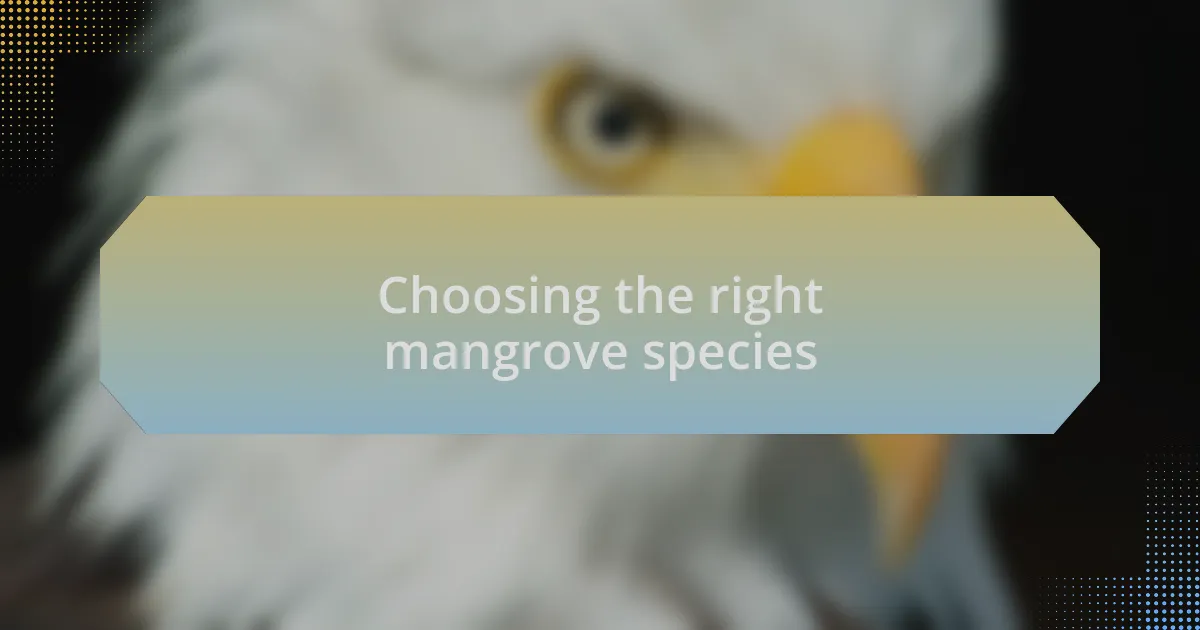
Choosing the right mangrove species
Choosing the right mangrove species is crucial to the success of your planting project. I’ve discovered that understanding the local ecosystem can guide you in selecting species that will thrive in your area. For instance, during one of my earlier projects, I mistakenly planted red mangroves in a location better suited for black mangroves, which taught me the importance of researching the specific needs of each species.
When I finally settled on the right species, I felt a sense of relief and excitement. Each mangrove has unique adaptations, like the way the avicennia trees can tolerate higher salinity. Have you ever felt that thrill from making an informed choice that could impact the environment positively? Those moments are not just about the trees; they’re about contributing to a healthier ecosystem and knowing I was part of a greater solution.
Considering the community’s needs is also a key factor in species selection. In one project, I worked closely with local fishermen, and their input helped me realize that planting species that provided fish habitat would directly benefit their livelihoods. This collaboration not only enriched the project but reinforced my belief that conservation is most effective when it integrates environmental needs with the community’s practical concerns. How might local insights shape your plant selection for the better?
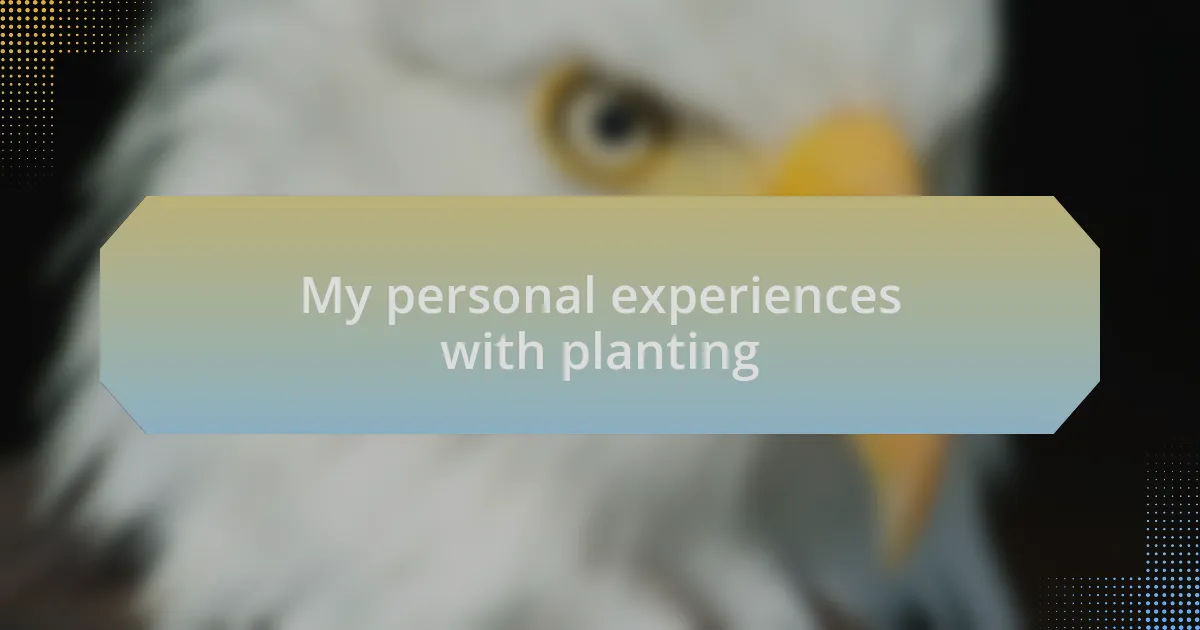
My personal experiences with planting
As I delved deeper into my planting journey, I vividly remember the day I spent on the shoreline, my hands caked in rich, dark mud. The sensation of planting each sapling felt incredibly grounding, connecting me to the earth in a way I hadn’t anticipated. It was more than just a physical act; it felt like I was planting hope along with those young trees.
One particular afternoon stands out in my mind. A sudden rain shower caught me off guard while I was planting; instead of retreating, I embraced it. The pouring rain illuminated the moment, as I watched the water soak into the soil, a tangible reminder of nature’s resilience. Have you ever found beauty in the challenges of conservation? That experience reaffirmed my passion and reminded me that nurturing the environment often comes with unpredictable twists and turns.
Then there was the memorable event when local students joined my planting efforts one weekend. Their curiosity and enthusiasm brought a vibrant energy to the project, reminding me of why I started this journey in the first place. I still recall their laughter and questions as they nestled each sapling into the ground, making it clear that the next generation is critical for the future of conservation. How can we inspire this passion in others? It’s moments like these that motivate me to keep planting, knowing that each seedling has the potential to spark a new wave of awareness and action.